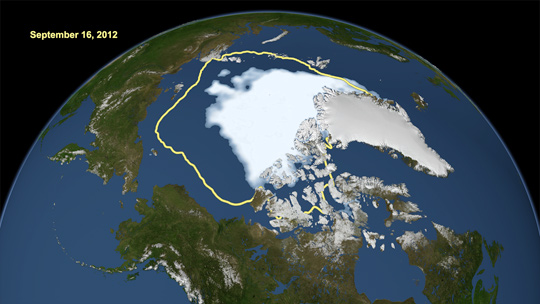“Climate models have predicted a retreat of the Arctic sea ice; but the actual retreat has proven to be much more rapid than the predictions.”
- Claire Parkinson, Ph.D., Climate Researcher, NASA Goddard
“The final Arctic summer sea ice collapse is now happening and will probably be complete by 2015 to 2016.”
- Peter Wadhams, Ph.D., Dir., Polar Ocean Physics Group,
Cambridge University, U. K.

October 25, 2012 Cambridge, England - The U. S. National Oceanic and Atmospheric Administration reports that the first nine months of 2012 were the warmest on record for the contiguous United States. Further, the Arctic is melting faster than any computer model ever predicted. For the first time on record, 75% of the Arctic sea ice had melted by mid-September 2012. The National Snow and Ice Data Center at the University of Colorado says that direct satellite measurements of the Arctic sea ice began in the late 1970s, but it has been at least a few thousand years since the Arctic has had so much open water.
Click here to subscribe and get instant access to read this report.
Click here to check your existing subscription status.
Existing members, login below:
© 1998 - 2025 by Linda Moulton Howe.
All Rights Reserved.

